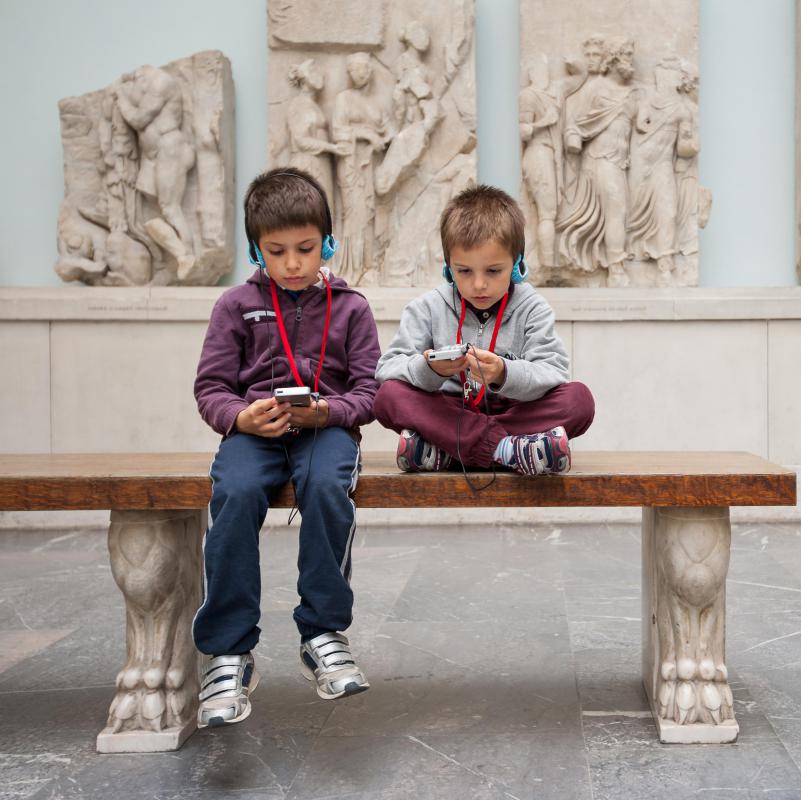At WiseGEEK, we're committed to delivering accurate, trustworthy information. Our expert-authored content is rigorously fact-checked and sourced from credible authorities. Discover how we uphold the highest standards in providing you with reliable knowledge.
What is a Children's Museum?
A children's museum is a nonprofit institution that provides children with hands-on learning experiences and interactive activities, because children learn through exploration and play. The first children's museum, called the Brooklyn Children's Museum, was founded in the year 1899.
As the years passed, more children's museums were established in the US. The second children's museum established was the Boston Children's Museum in the year 1913. The world's largest children's museum, The Children's Museum of Indianapolis, opened its doors to the public in 1925.

There are two international professional organizations of children's museums. They are the Association of Children's Museums (ACM) and The Hands On! Europe Association of Children's Museums (HO!E). Museums that belong to the ACM permit members of one museum to gain free admission to all other children's museums belonging to the association. About 300 children's museums currently exist in the U.S.; they are one of the fastest-growing types of museums in the world.

In 2006, over 30 million people visited a children's museum affiliated with the ACM. People love to visit these institutions because children's museums stimulate a child's curiosity and develop her into a lifelong learner. Children and families enjoy time together as they explore exhibits relating to history, science, or art. Kids are encouraged to touch and explore a variety of exhibits as they learn about the world around them.

Typical exhibits may include a bubble-blowing station, a rock-climbing wall, a 19th century ship where children can pretend to sail and fish, and a host of other fun activities. Children can learn about art, different cultures, or simply read a book. The goal is to encourage kids to become active learners in an informal, non-threatening environment.

Parents who would like to take their children to a museum designed for kids should call the museum in advance. This way, parents can learn about the museum's special programs, upcoming exhibits, and activities for specific age groups. Parents can find age-appropriate activities for each child in the family, tailoring the visit to fit their own family's needs.

A good way to learn more about a museum for children is to visit its website. The museum website usually lists important details such as directions to the museum, hours of operation, and admission fees. The website will also provide a list of upcoming events or special exhibits.
When visiting a museum designed for young children, parents should let their kids guide them through the galleries. Allow children time to explore the various exhibits at their own pace so that they can get the full benefit of the museum experience. Most importantly, parents should try to participate as much as possible. This is the parents' opportunity to explore the museum along with their children, learning about science, history, and art through colorful, hands-on exhibits.
AS FEATURED ON:
AS FEATURED ON:















Discussion Comments
My sister lives in St Louis, and they have a great children's museum that we have been to many times. It is called the Magic House, and every time we visit my kids ask if we can go to that 'magic place'.
Even if you are not a member, they have free admission for everyone on Wednesday evenings. One of my kids favorite activities at this museum is the Jack in the Beanstalk exhibit. This is three stories high and gives them the opportunity to climb up pretending they are Jack in the Beanstalk.
We cannot leave this museum without a few trip up and down that beanstalk.
Anytime we are visiting a new city and have some extra time on our hands, we always check to see if they have any Children's Museums. Not only are they economical (sometimes you can even get free admission), but they offer your kids great learning opportunities that will stay with them longer than a trip to an amusement park.
When we were in Chicago we went to the Children's Museum at Navy Pier. You can easily spend the whole day here! This is a three story museum full of hands-on learning. My kids especially loved the Rocket Science area where they could make their own rocket and even got the chance to launch it.
The next time we visit Chicago, I know my kids are going to ask to go back to this museum. I know they have special days and times when they offer free admission so this can really make it budget friendly.
Post your comments